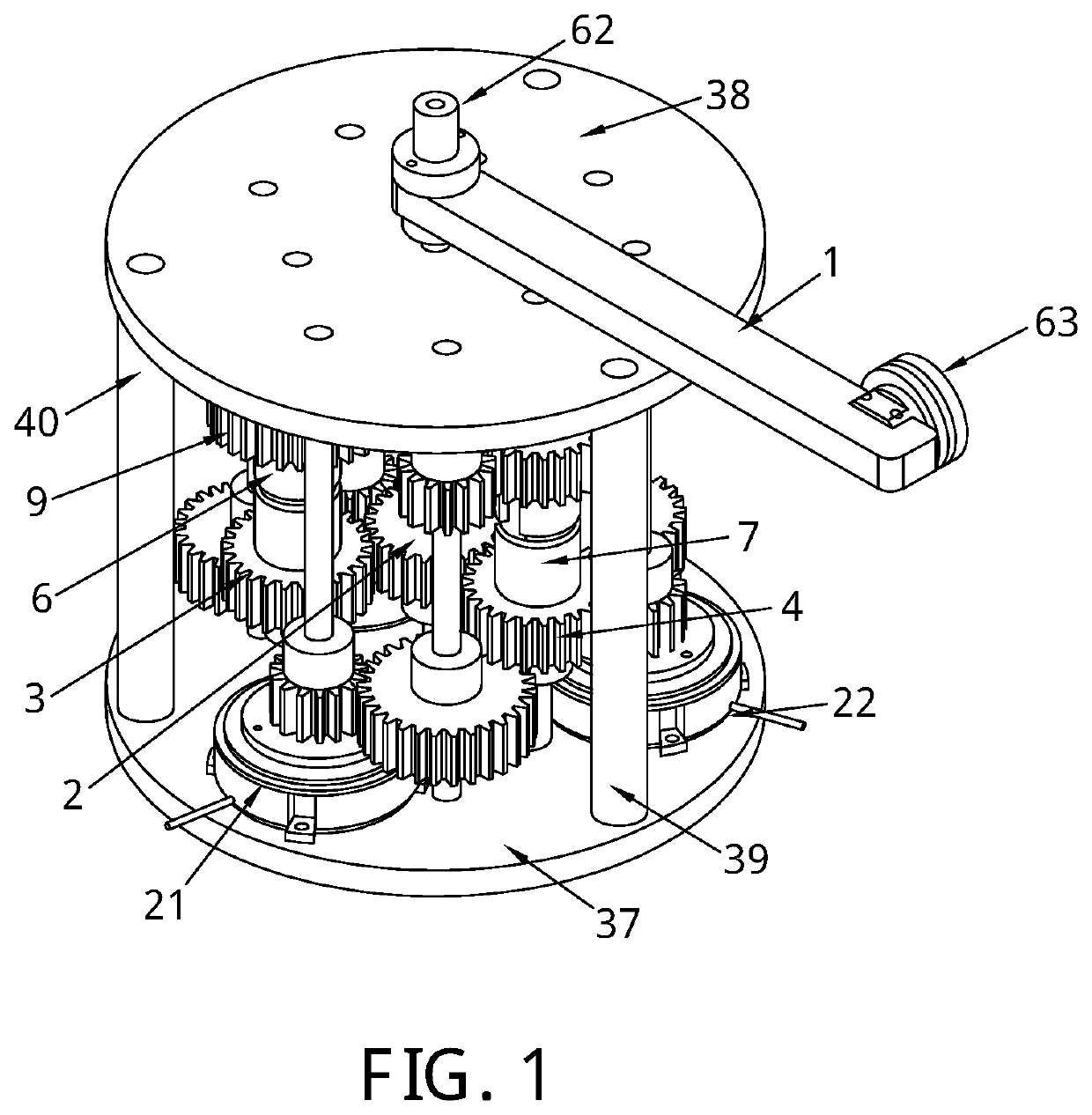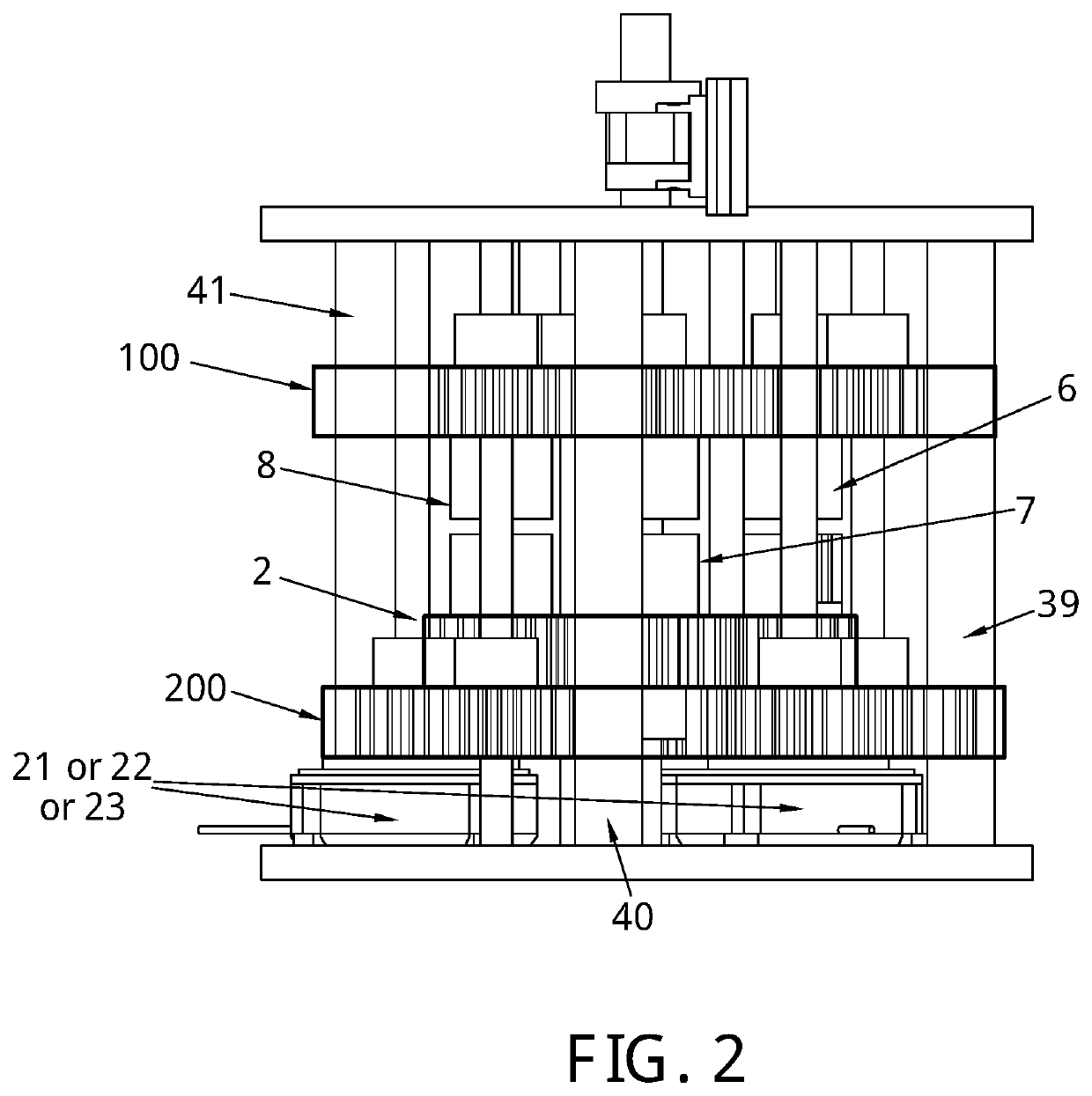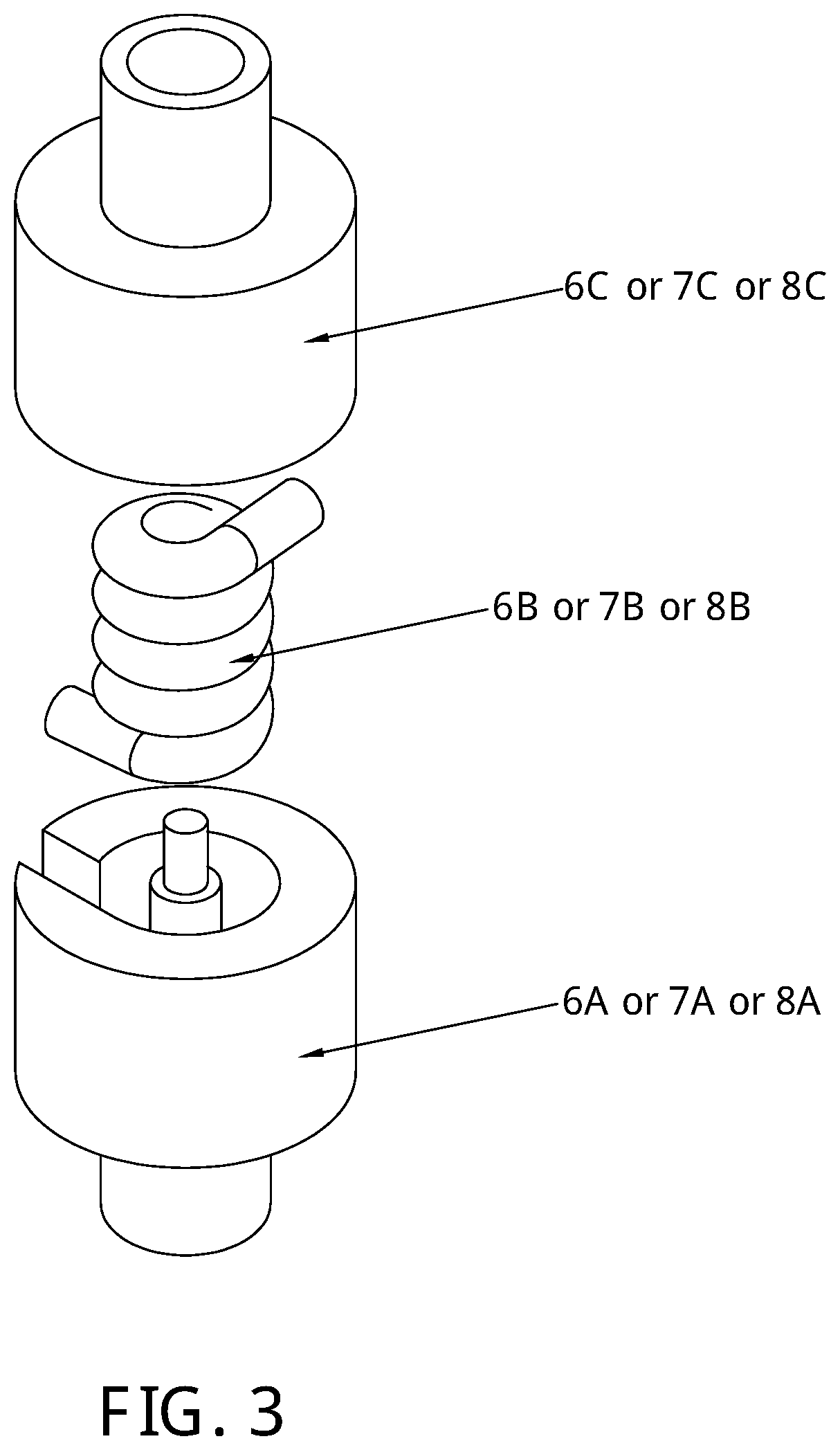Binary Passive Variable Stiffness Joint
a passive variable and joint technology, applied in the field of stiffness joints, can solve the problems of high energy consumption, complex control system, and need of accurate and expensive force or torque sensors, and achieve the effect of altering the stiffness levels of robotic joints
- Summary
- Abstract
- Description
- Claims
- Application Information
AI Technical Summary
Benefits of technology
Problems solved by technology
Method used
Image
Examples
Embodiment Construction
[0049]The invention introduces a system and mechanism to alter the stiffness of a robotic revolute joint according to a number of stiffness levels, by proposing the design of a passive binary controlled variable stiffness joint (BpVSJ).
[0050]In a preferred embodiment of the invention, as shown in FIG. 1-6, the structure of the variable stiffness joint comprises of two bases 37 and 38 connected using three frame rods 39, 40, and 41. An output link 1 is mounted on a shaft 24 which is mounted on bases 37 and 38. Shaft 24 holds also a main driving gear 2 which connects with three planetary gears 3, 4, and 5 in a (1:1) ratio. Each of these three gears is mounted on shafts 25, 26 and 27 respectively. These shafts are held to the lower base 37. Each of these shafts holds the lower container—6A, 7A and 8A respectively—of three elastic elements 6B, 7B and 8B respectively. The elastic elements are torsional springs. Each of these torsional springs is encapsulated in upper containers 6C, 7C an...
PUM
 Login to View More
Login to View More Abstract
Description
Claims
Application Information
 Login to View More
Login to View More - R&D
- Intellectual Property
- Life Sciences
- Materials
- Tech Scout
- Unparalleled Data Quality
- Higher Quality Content
- 60% Fewer Hallucinations
Browse by: Latest US Patents, China's latest patents, Technical Efficacy Thesaurus, Application Domain, Technology Topic, Popular Technical Reports.
© 2025 PatSnap. All rights reserved.Legal|Privacy policy|Modern Slavery Act Transparency Statement|Sitemap|About US| Contact US: help@patsnap.com



